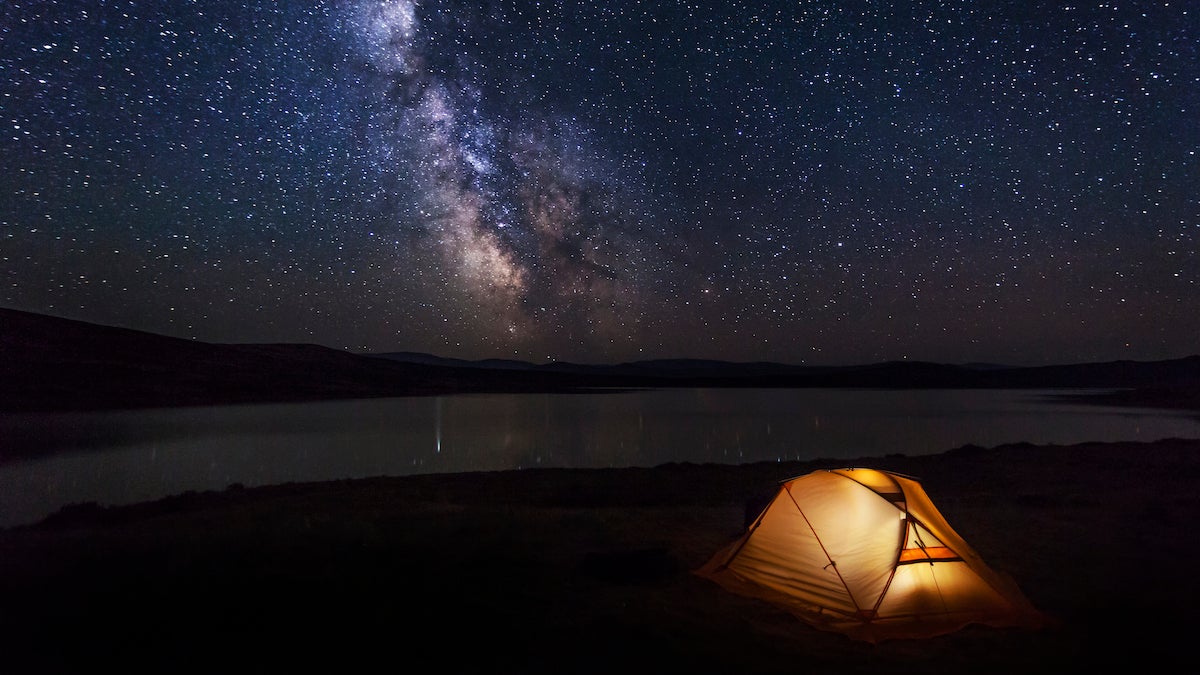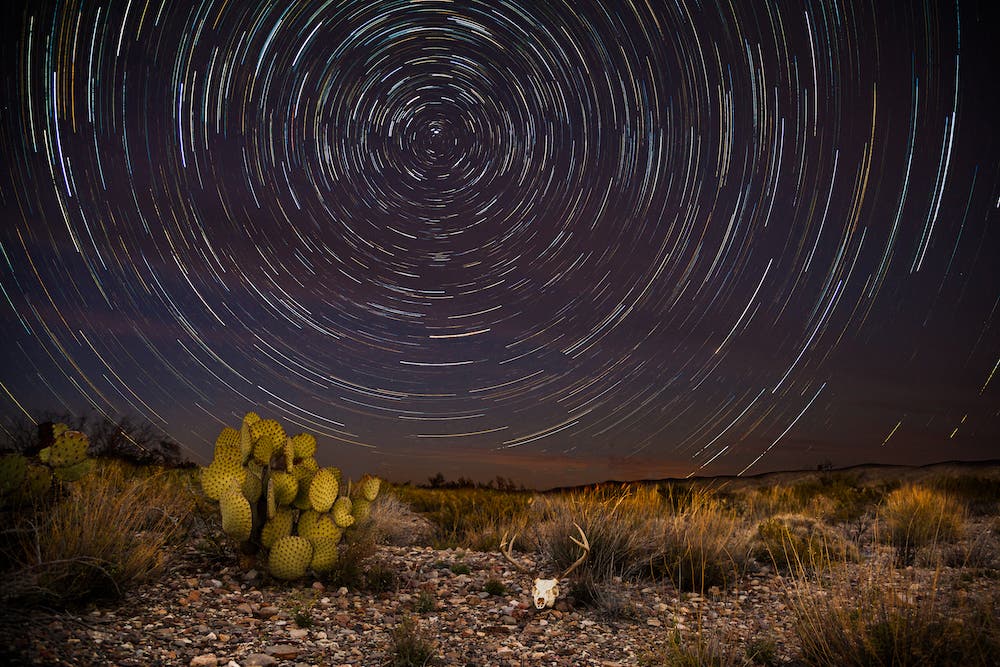The Best No-Crowd Places to Go Stargazing

(Photo: Anton Petrus via Getty Images)
In our new travel column, assistant editor Emma Veidt answers your hiking questions with the help of a rotating cast of experts.
I want to go on a stargazing hike. The problem is, all the places I’ve turned up seem to be pretty popular. Where should I go so I don’t need to fight the crowds? —Astral Observer
Dear Observer,
Last fall, I went stargazing in Joshua Tree and spent most of the night listening to crowds hoot and holler from their campsites nearby. Sometimes you just want to count shooting stars without hearing an EDM beat pumping from someone’s tinny bluetooth speaker off in the distance. So I totally understand your request. Luckily, there are plenty of places around the country that offer empty parks and glimmering skies.
First, let’s identify what conditions you need for “good” stargazing. This might be obvious, but you need a dark sky. Light pollution – stray light from nearby cities that manifests as a hazy glow in the night sky – is a stargazer’s kryptonite. But how far should you drive from human activity to no longer see its effects in the sky? At least 20 to 30 miles. There’s a numeric scale, called the Bortle scale, that identifies how much light pollution is in the sky at a given time; a Class 9 sky is the same as one you’d see in the inner city—you’d be lucky if you saw even the brightest stars—and a Class 1 sky is the darkest you can find on Earth. Generally, a Class 3 or 4 sky is dark enough for high-quality stargazing. (You can look up the Bortle rating for your adventures here.)
Higher altitudes offer clearer skies than at those at sea level: Low-altitude air is dense with haze, fog, and smoke, so it’s best to find a viewing location a couple thousand feet above the surrounding areas. Be sure to check the phase of the moon before heading out to stargaze, too, especially if you’re trying to see meteor showers or the Milky Way. A full moon is so bright that it could dim the astral wonders. Time your trips for the new moon phase, or before moonrise or after moonset.
Above all, be sure to follow local guidelines before setting out to stargaze. Check if you’re actually allowed to be at that location at night, even if you’re on public land. Be careful where you step on trail, and follow all guidelines to stay safe around local wildlife. These six spots are great places to start.
Natural Bridges National Monument, Utah
Over the course of millions of years, wind and water eroded through rock and created windows to the sky in the form of these natural bridges. Under some of the darkest skies in the world, you can gaze at the same stars that have been captivating people here for thousands of years. It’s possible to see up to 15,000 stars here with the naked eye (compared to the 500 you’d likely see back in town), but the crown jewel of the area is the view of the Milky Way rising over the Owachomo Bridge.
This southeast Utah landmark became the state’s first national monument in 1908 and first certified International Dark Sky Park in 2007, and in prime conditions, it’s easy to see why: At Natural Bridges, the constellations are so bright that they can cast shadows on the ground. About 100,000 people visit the national monument every year during the daytime, but few stay past sunset to see the park at its best. Get lucky, and you’ll have the natural bridges and celestial bodies all to yourself.

Big Bend National Park, Texas
Over 70 miles from the nearest city of Alpine Big Bend is one of the best places to stargaze because it’s a national park with some of the lowest visitation numbers and lowest levels of light pollution in the contiguous U.S. It’s also the largest protected area of Chihuahuan Desert topography, geology, and ecology in the country. When you visit, bring your camera: The Chisos Mountains provide a stunning backdrop for photos of star trails. And rarely, it’s possible to see the northern lights all the way from Big Bend, too.
If you are interested in a guided tour, the park offers ranger-led moonlight hikes and programs. If you prefer to explore alone, though, check out the Santa Elena Overlook, Tuff Canyon, and Mule Ears Viewpoint for some of the best opportunities to see the starry skies.
Chaco Culture National Historical Park, New Mexico
New Mexico’s relationship with the intergalactic is well-documented—you don’t become the site of a UFO crash landing and then just ignore it. This fascination with the heavens might be because the state has the perfect conditions for clear, dark skies: high altitudes, low population densities, dry climates, and Gold- and Silver-tier Dark Sky Parks. One of the best places to connect with the interstellar is Chaco Culture National Historical Park, where rangers offer evening lectures on the constellations and their significance to the area’s original Puebloan inhabitants. (Talks available Tuesday, Friday, and Saturday evenings in the observatory.)
A decade ago, in 2013, Chaco became a Gold-tier International Dark Sky Park, and there is no permanent outdoor lighting in 99 percent of the area in order to preserve the sanctity of the sky. The park also offers astronomy programs, daytime solar viewing, and nighttime telescope views of the dark sky above.
Central Idaho Dark Sky Reserve, Idaho
Nestled in the Sawtooth Mountains, this 1,400 square-mile reserve is one of only two International Dark Sky Reserves in the country. The reserve comprises Blaine, Boise, Custer, and Elmore counties, and the towns of Stanley, Lower Stanley, Smiley Creek, Ketchup, and Sun Valley. Many of these counties have local ordinances to preserve the natural darkness, which helps make this remote region one of the last large areas of preserved natural nighttime darkness left in the United States. Most visitors come during the day for skiing, white water rafting, backpacking, hiking, and horseback riding, but few stay past sunset for the real show.
It’s one of the largest sky reserves in the world, and you’re sure to find amazing, crowd-free views wherever you wander within it. Try visiting near Sun Valley Lake: If the night is clear enough and the lake is calm enough, you can see stars reflecting off the water.
Katahdin Woods and Waters National Monument, Maine
The first International Dark Sky Place designated in Maine and New England as a whole, Katahdin Woods and Waters National Monument is a prime place to drink it the wonders above the region’s forested mountains. Stars Over Katahdin, an annual celebration, has been honoring the skies above for a decade with a night of observation with astral enthusiasts and Volunteers-In-Parks (VIPs) astronomers. Because the skies here are so preserved, you’ll be able to experience the same night skies as the Wabanaki people 11,000 years ago, and more recently, explorers such as John James Audubon, Henry David Thoreau, and Theodore Roosevelt.
Try checking out the stars from the Sandbank Stream campsites, Katahdin Loop Road Overlook, Haskell Hut, and Big Spring Brook Hut. Far from Katahdin Woods and Waters? That’s OK. Over 87,500 acres of wilderness are now under ordinance to manage light pollution in Maine, so there are plenty of areas throughout the state that could provide a sanctuary of starry skies.
Newport State Park, Wisconsin
At the tip of the Door Peninsula along 11 miles of Lake Michigan shoreline, you can find the second Dark Sky Park in the midwest: Newport State Park. The geography helps preserve the cosmic space; it’s located in a sparsely populated side of the peninsula and separated from the mainland by 15 miles of open water. Even though Newport only received its designation as a Dark Sky Park in 2017, for the past two and a half decades, park officials have prioritized public outreach and education on astronomy and the significance of natural darkness preservation.
Although you can find crystal-clear views of the sky anywhere in the park, check out these spots for the best conditions.